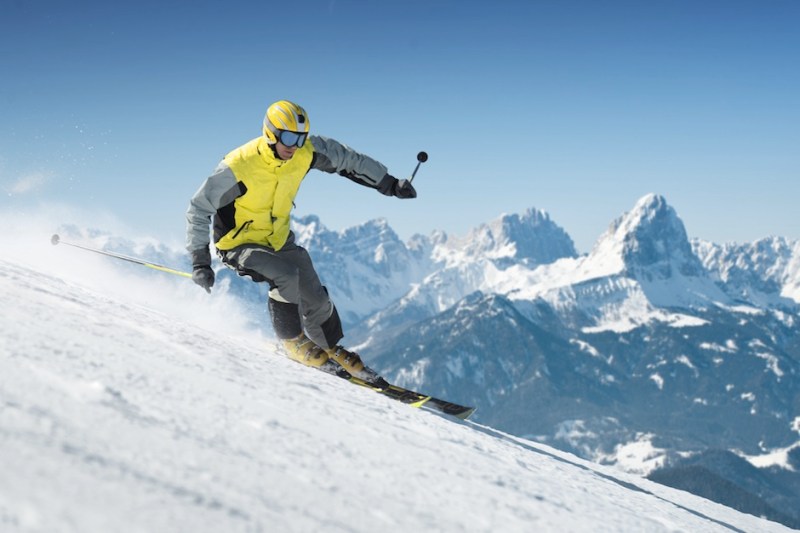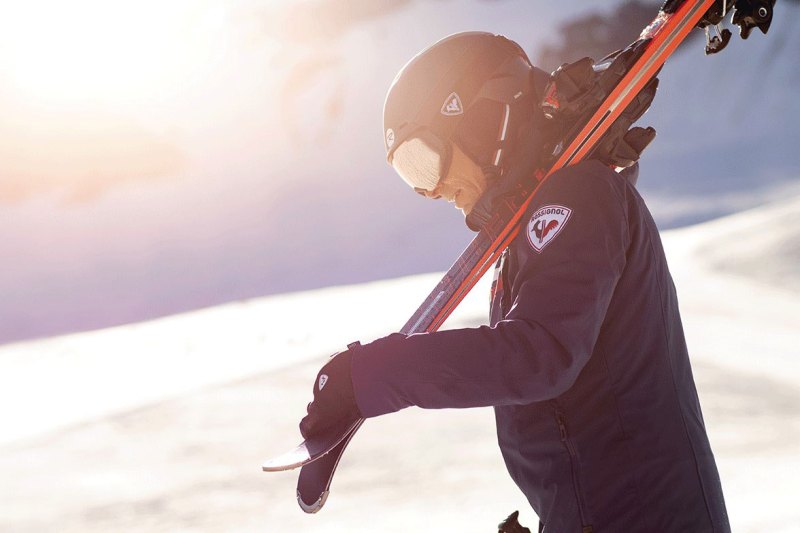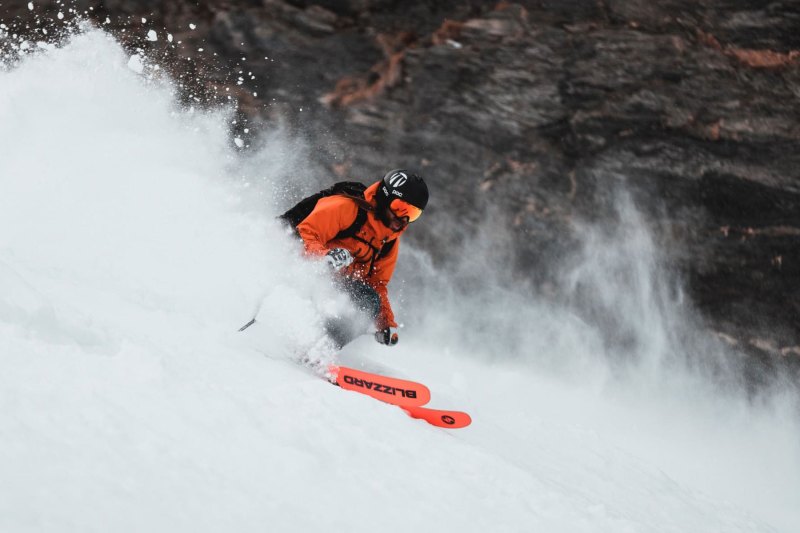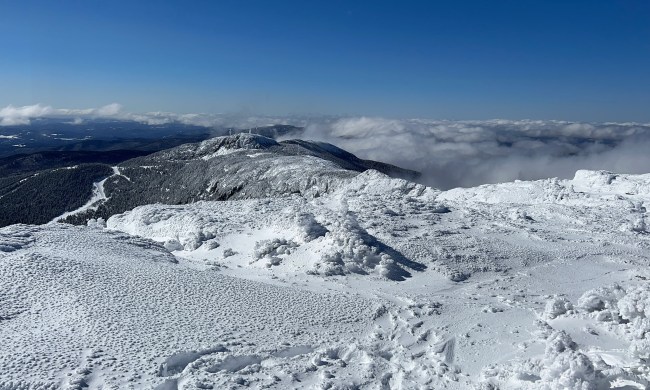
It’s never the wrong time to be thinking about your next ski vacation. You’ve found the perfect beginner resort or one with some steep and deep terrain, and you’ve even upgraded your ski gear for the season. But what about your skis? Will those ex-rental bad boys still rock it for you now that you’ve mastered your turns, or would you rather be seen rocking a set of quality skis to complete the look?
It’s not just aesthetic, either. Sure, in the hands of a pro, your shaky old skis could be made to look pretty good, but if you’re serious about progression — or just about genuinely enjoying your time on the slopes — you need the right set of skis. These come in all forms — twin tips, powder skis, race skis, beginner, intermediate, and advanced — but what’s important is that whatever set you choose should be quality. Now more than ever, the market feels like a level playing field, with many ski brands all vying to be number one, but which brands are quality, and which should you avoid? Well, here’s our list of the top ski brands.

Rossignol
The brand with one of the oldest names in skiing, Abel Rossignol made his first namesake skis in Isère, France, in 1907 using his carpentry skills that he learned from a textile accessory business. French skier Jean Vuarnet used the brand’s all-metal Allais 60s skis to win the downhill competition at the 1960 Winter Olympics, and, in 1964, Rossignol introduced its fiberglass ski, known as the Strato. Rossignol has had great Olympic success, skiers on Rossignol skis won six out of 10 possible gold medals at the 1988 Winter Games in Calgary. Rossignol is still a dominant name in the market today as the brand has exploded into every corner of the ski gear and winter apparel markets.

K2 Sports
Seattle-based K2 Sports is among the most recognized ski brands in the world — arguably it is the most recognized ski brand in the United States. In fact, the company is credited with being the creator of the first fiberglass skis. Every product in the company’s lineup is durable and well-designed, and the breadth of offerings caters to all levels of skiers, from novice to expert. For non-skiers, K2 offers a solid lineup of great snowboards and a line of splitboards. K2 also has an extensive apparel line, so you can match your skis to the rest of your gear.

Atomic
Founded in 1955, Atomic created the first powder ski more than 30 years ago, which has changed the ski world ever since. Based in the Austrian Alps since the company’s inception, Atomic is the largest ski maker in the world, with the company saying it produces 400,000 pairs of skis each year. While the company started with powder skis, today, Alpine focuses on more technical offerings for hardcore skiers who prefer their runs fast, in the backcountry, or both. For that reason, many of its skis are better suited for experts with a few years of downhill under their belts.

Salomon
Where most of the brands on this list focus on skiing, snowboarding, and winter sports gear, Salomon, which was founded in 1947 in the French Alps, is a jack of all trades. The company’s catalog runs deep with equipment in almost every category of adventuring, from backpacking to trail running to travel. Still, it hasn’t forgotten its roots, as it was the first company to replace traditional leather straps with a version of the more modern (and safer) binding that we are familiar with today. That experience is why its ski and ski accessory products are among the best in the world.

Head
In the mid-19th century, heavy wood skis were the norm. Howard Head brought his aircraft-building skills to bear on the industry and turned it on its, well, head. By tinkering with then-state-of-the-art plastics and metals for two whole years, he created a lighter, faster, and more durable new ski design. So the Head Standard ski was born. The brand continues to push the limits of innovation through technology. While the company branched out into tennis in the late 1960s, and is still a major presence in that sport, it hasn’t forgotten its roots as a ski company and is still turning out high-quality gear.

Völkl
As Germany’s largest ski brand and one of the last ski manufacturers still based in the country, Völkl’s history dates back to 1923 when it was founded in Straubing, Germany. Its skis are lauded as being among the best in the world for their durability and ability to hold an edge. Almost every product in its deep catalog targets expert skiers and off-piste lovers. For that reason, novice skiers may find them a little challenging to control. If that’s the case, Völkl does offer a full line of branded gear so you can look like an expert, even if you’re not quite there yet.

Nordica
Founded in Italy and still based there, Nordica debuted in the late 1930s as a mountain boot business, and that’s still a large part of what it does. But, in the nearly 100 years since then, the company has expanded into every corner of the ski market. In the 1960s, Nordica introduced some innovations to the ski boot that are still in use now. It was the first company to have its boots fastened with a buckle, and it was the first company to manufacture an all-polyurethane ski boot that was specifically molded for the right and left foot. It’s still continuing that innovation today, as it’s known for making some of the most versatile and approachable skis and boots worldwide for beginners and experts alike.

DPS Skis
In its relatively short, 15-year history, DPS Skis has become a household name among hardcore backcountry skiers. The brand is the go-to provider for, in its own words, “the world’s most advanced skis.” With roots on the slopes of Utah and skis made in the United States, it’s no surprise that they deliver with top-shelf, off-piste-ready sticks built for serious downhill adventures that are sold all over the world. DPS spares no expense from design to construction at its Utah factory, but buyers pay a handsome premium for the privilege to ride — most pairs start at well over $1,000.

Blizzard
Blizzard is another favorite among advanced and expert skiers. The Austrian maker, which was founded as both a ski and wooden furniture workshop (though it eventually dropped the furniture to focus on skis) in 1945, designs and crafts some of the world’s best touring and all-mountain skis at its factory in Mittersill, Austria. The construction of its most premium offerings includes two sheets of metal, delivering incredible durability and strength. It also boasts a solid line-up of backcountry-friendly skis to boot, making it popular among more adventurous competitors. If you’re looking for some high-quality gear, Blizzard has you covered as well with clothing, bags, hats, and other apparel.

Black Crows
While this news may be “hard to handle,” we’re not talking about the 1990s band The Black Crowes here (sorry, couldn’t resist the pun). As a ski maker, Black Crows is lesser known here in the United States. But, this company’s roots in the French Alps give it immediate and well-deserved cred in the world of ski gear. With two professional freeskiers — Bruno Compagnet and Camille Jaccoux — at the helm, the company has sought to provide discerning skiers with versatile, go-anywhere sticks designed to tackle any and all downhill adventures. Availability is often limited here in the States, but they’re worth the wait — and the price — if you can find them.

Icelantic Skis
With a name like Icelantic, you would probably think these come from Reykjavik, but you’d be wrong, the company, which was founded in 2003 and sold its first skis in 2005, hand makes all of its skis in the heart of the Rocky Mountains in Golden, Colorado. These high-quality skis come with a three-year warranty, so you won’t have to worry if something goes wrong. Besides the quality, what makes Icelantic skis stand out from the crowd is their artistic design. These are not some drab, boring skis, they all feature amazing designs drawn from nature, so they look as good as they feel speeding down the slopes.


